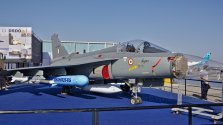If a Chinese Carrier Group is fighting an Indian one, you can be sure of one thing. They won't get that close. They will have range on the Indians but not vice versa. The carrier and it's escorts will be attacked with long range supersonic missiles like the YJ-12, outranging the Brahmos. It's pure fantasy to imagine today's naval battle looking anywhere close to
the Battle of Midway.
(1)this is a huge oversimplification of naval/air combat. If anything, it depends on specific place, conditions (weather etc), and so much more.
Generally,
PLAN CBG wants to be closer to the opponent than the Indian one - even when/if it has a first-strike range/detection(track) advantage. Precisely because it's stronger, and relies on a superior/more advanced and complex fighting concept.
For Indians, it's really about trying to get off a well-aimed ship-based ASM salvo and praying for the best (depending on the results - either try to run for life, or try to pursue and make the opponent scuttle the damaged stuff).
(2)airstrikes can generally be mounted further out than ASCM strikes. The airplane itself is an efficient intermediate platform for an ASCM. J-15/YJ-83K (or mig-29k/Kh-35M) combination reaches further out, and is
monumentally less dependant on fine-tracking of targets many hundreds or even thousand miles away. On top of that - air ops don't really give out the location of the one who performs them.
Many ship2ship weapons (
especially ballistic and hypersonic) are both highly dependent on precise targeting, timely updates, and immediately give out the precise location of the attacker the moment he launches them.
(3)information superiority - the main asset of USN/PLAN is best realized
closer to the enemy than salvo superiority (where IN, with its significant Brahmos salvo, is at the very least competitive). It is just a better set to let it realize information/weapon system combination superiority, and allows for the most decisive action achievable (what's the point of all the ludicrous investment into the information/engagement bubble otherwise).
PLAN CBG
can push into the envelopes(which are by themselves little more than circles on the map for IN - reach doesn't equal knowing what the heck is going up in endless empty seas), it
can ensure relatively uninterrupted information/engagement space for hundreds of miles - so for it being, for example, 400 miles away or just 50 miles away isn't terribly different. The major threat level is mostly the same, but the closer you are, the lesser the chances for the opponent to escape.
If you can first defeat the opponent, and then literally gun down incapacitated wrecks to the bottom - do it.
(4)YJ-12 isn't the main nor even secondary strike asset of the PLAN outside of Chinese seas (those units don't belong to CBGs anyways). It's either YJ-18(now) or a YJ-21/HQ-9B/YJ-83K combination in the future.
Just a remain (backup if you will) from the times when PLAN itself was doing what IN is doing right now.

